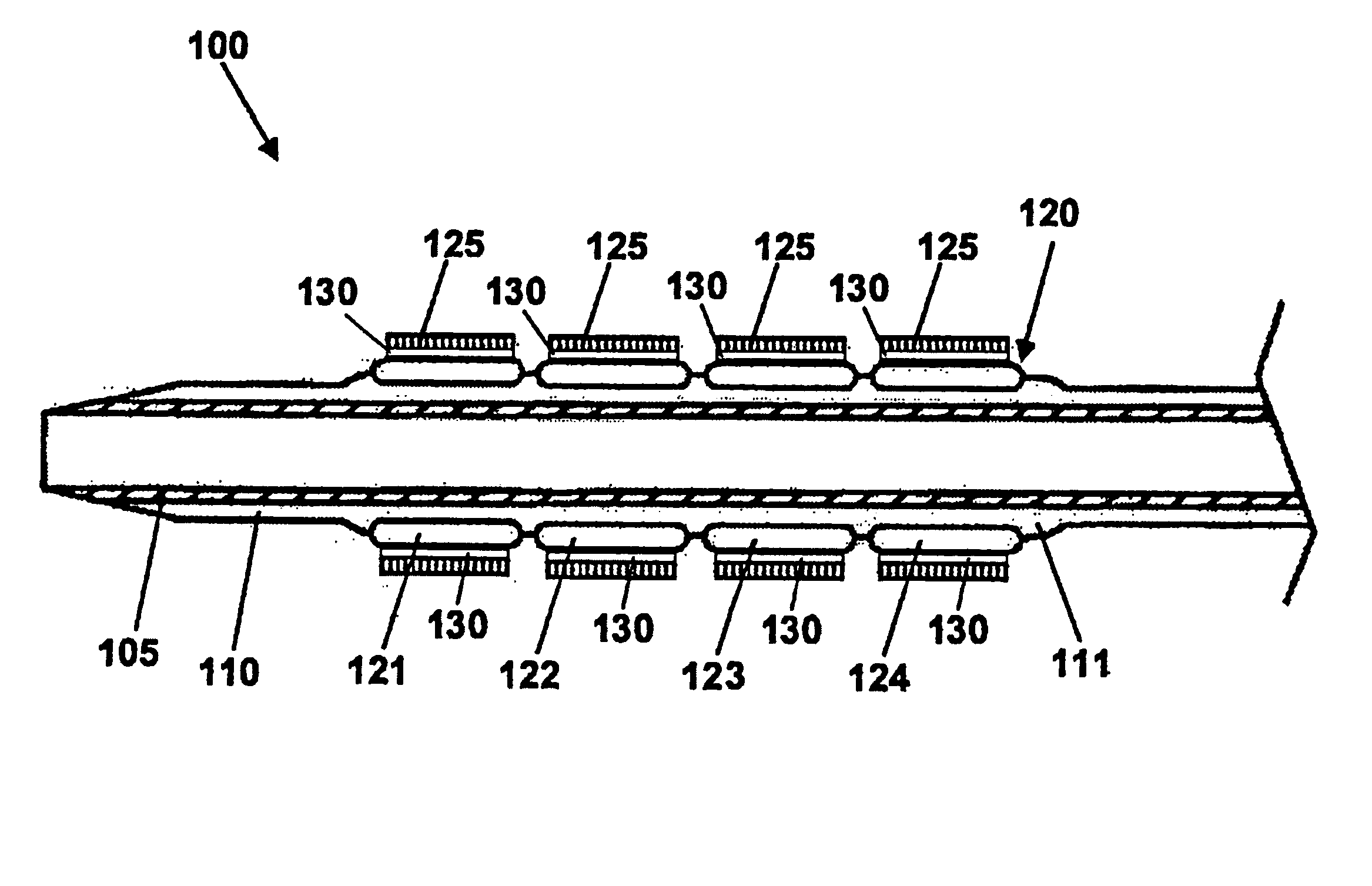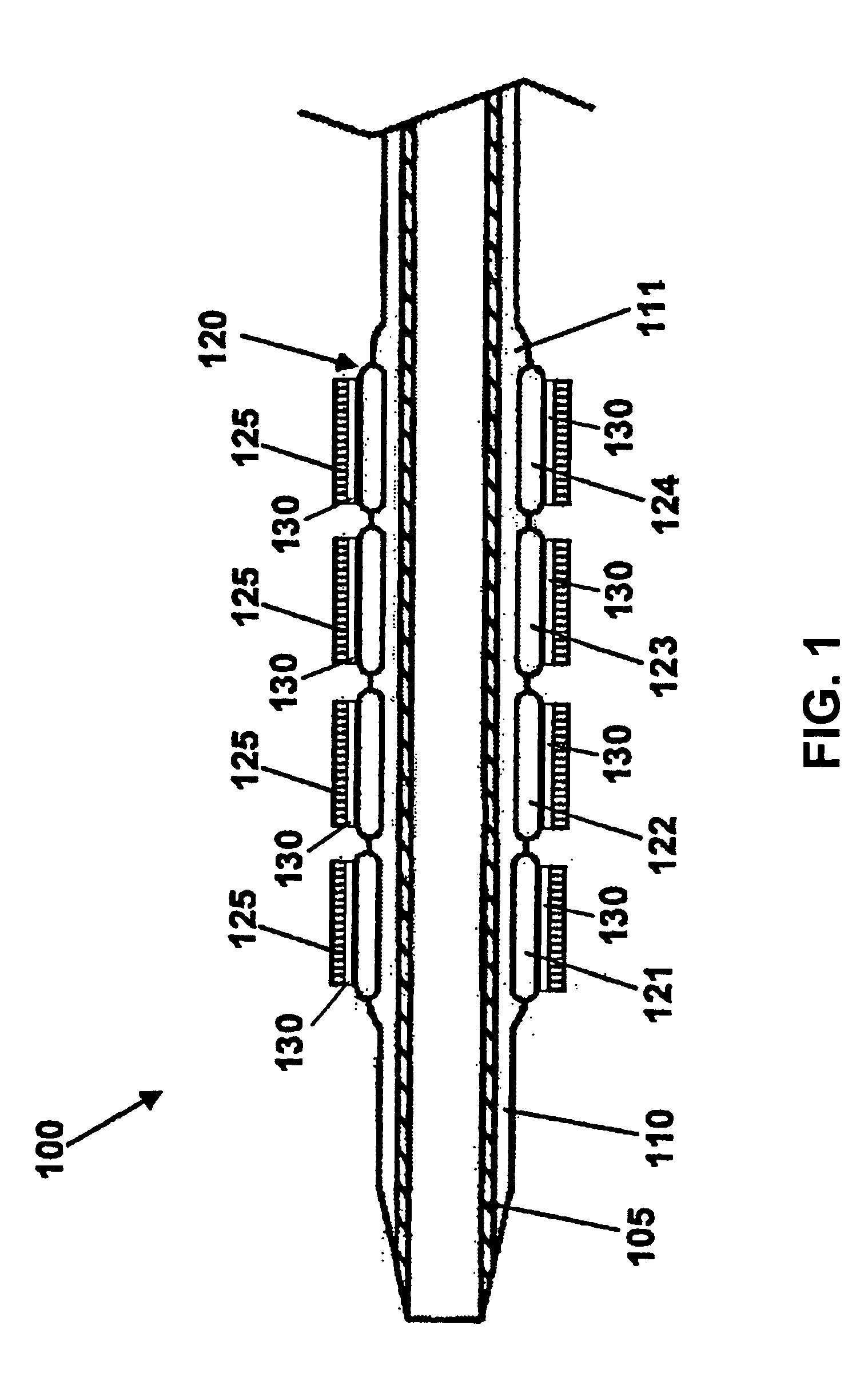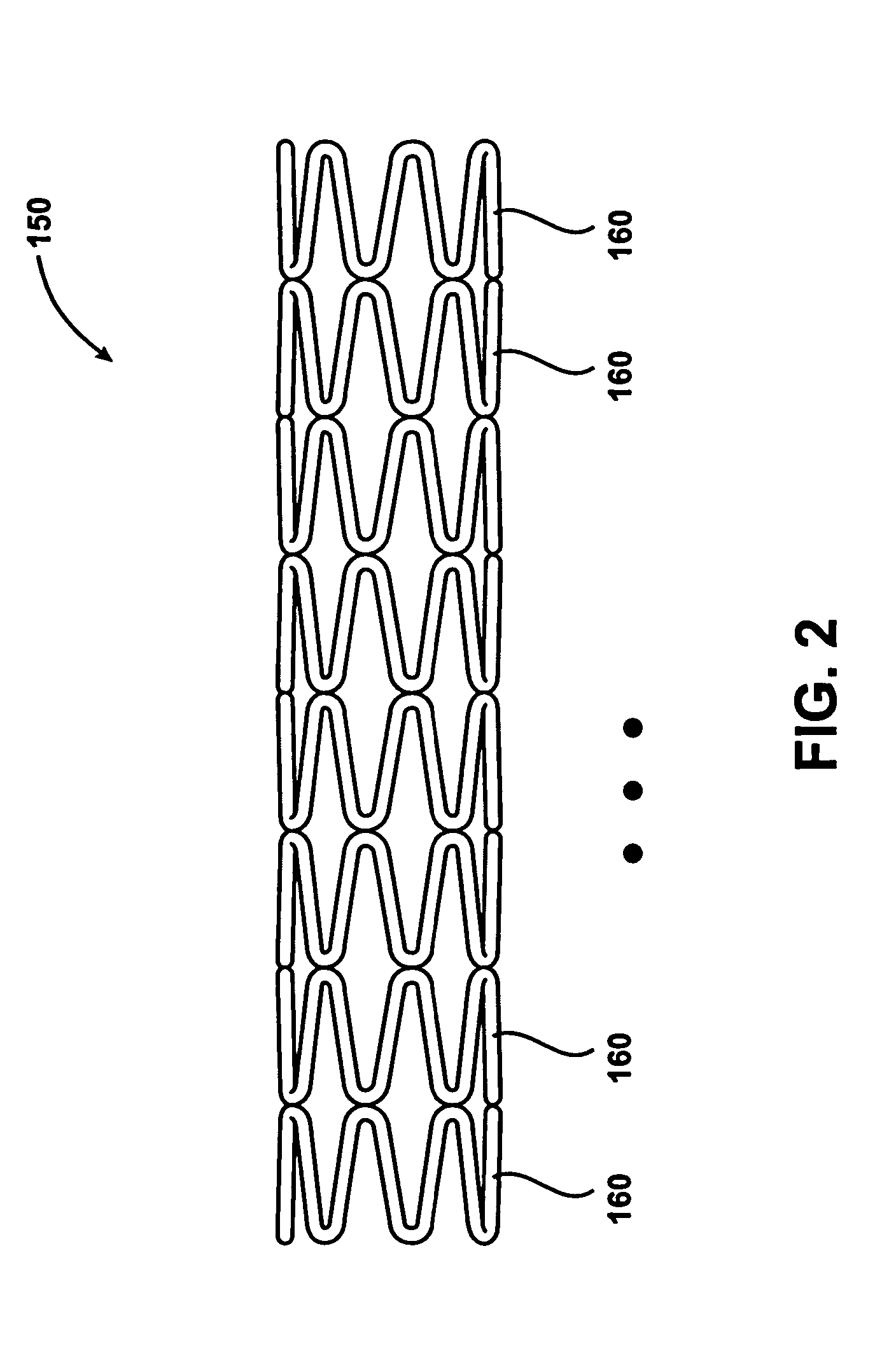Gradient coated stent and method of fabrication
a technology of stents and coatings, applied in the field of medical implants, can solve the problems of local tissue damage of certain drugs, significant re-narrowing of treated vessels, and dose of drugs delivered with time, and achieve the effect of reducing labor
- Summary
- Abstract
- Description
- Claims
- Application Information
AI Technical Summary
Benefits of technology
Problems solved by technology
Method used
Image
Examples
Embodiment Construction
[0031]FIG. 1 shows a stent delivery system made in accordance with the present invention. The stent delivery system 100 includes a catheter 105, a balloon 110 operably attached to the catheter 105, and a stent 120 disposed on the balloon 110. The balloon 110, shown in a collapsed state, may be any variety of balloons capable of expanding the stent 120. The balloon 110 may be manufactured from a material such as polyethylene, polyethylene terephthalate (PET), nylon, Pebax® polyether-block co-polyamide polymers, or the like. In one embodiment, the balloon 110 may include retention means 111, such as mechanical or adhesive structures, for retaining the stent 120 on the balloon 110 until it is deployed. The catheter 105 may be any variety of balloon catheters, such as a PTCA (percutaneous transluminal coronary angioplasty) balloon catheter, capable of supporting a balloon during angioplasty.
[0032] The stent 120 may be any variety of implantable prosthetic devices known in the art and c...
PUM
| Property | Measurement | Unit |
|---|---|---|
| thickness | aaaaa | aaaaa |
| concentration | aaaaa | aaaaa |
| solution | aaaaa | aaaaa |
Abstract
Description
Claims
Application Information
 Login to View More
Login to View More - R&D
- Intellectual Property
- Life Sciences
- Materials
- Tech Scout
- Unparalleled Data Quality
- Higher Quality Content
- 60% Fewer Hallucinations
Browse by: Latest US Patents, China's latest patents, Technical Efficacy Thesaurus, Application Domain, Technology Topic, Popular Technical Reports.
© 2025 PatSnap. All rights reserved.Legal|Privacy policy|Modern Slavery Act Transparency Statement|Sitemap|About US| Contact US: help@patsnap.com



